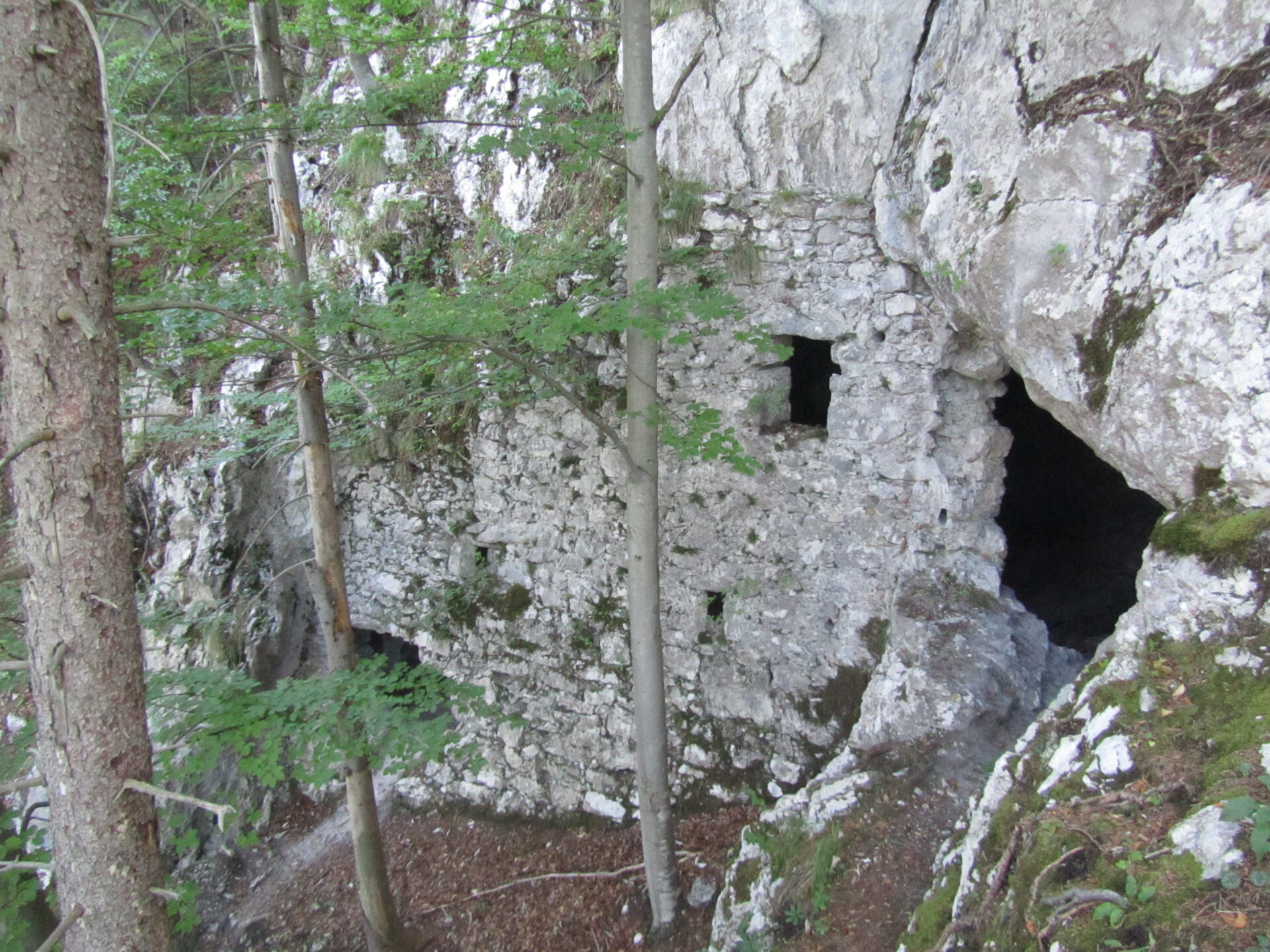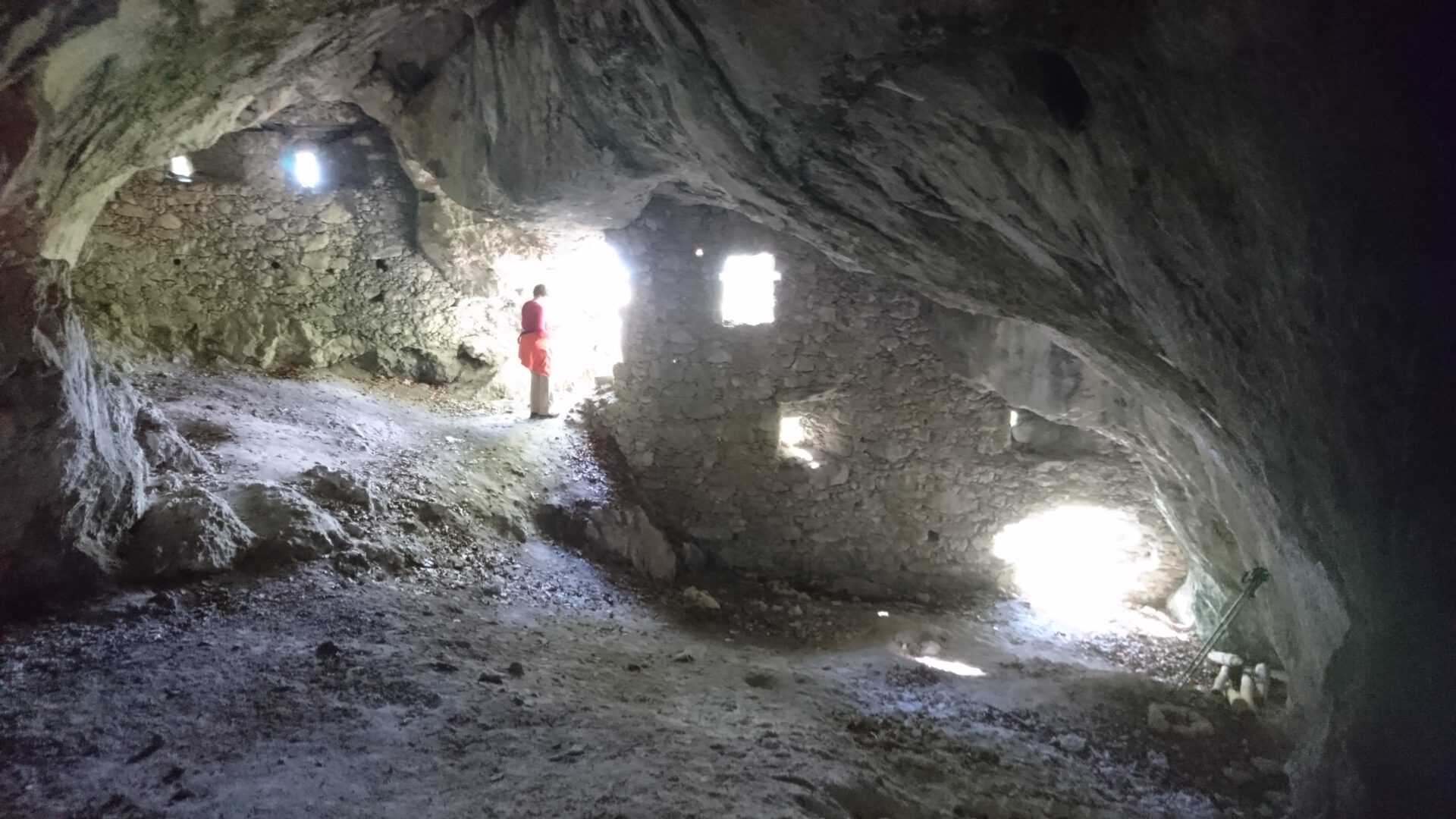The Slovenian land is dotted with the remains of numerous fortresses, which after more than half a millennium still preserve the memory of what were probably the cruellest and most difficult times that people in this territory have ever lived through. These are the remains of camps where people tried to defend themselves from the marauding Turkish gangs.
The expansion strategy of the Turkish state at the end of the Middle Ages and the beginning of the 16th century included the prior weakening of the economy and population of the border regions that they intended to occupy. This weakening was achieved through constant marauding raids by small units of light cavalry, the so-called Akinji and Martolos, who left behind devastated landscapes and a killed or enslaved population.
All the attacks on Slovenian land took place from Bosnia. The territory of today’s Slovenia first encountered such an attack on 9th October 1408, when Metlika and its surroundings were attacked and looted. A second invasion took place three years later when, in addition to Metlika, the town of Crnomelj was also a victim. In the year 1414 or 1415 the Turks had already made their way to beneath the surrounding walls of Ljubljana. The frantic fortification of all towns and castles in the land followed, however over the next 50 years there was no sign of the Turks.
This peace was mainly achieved by the Counts of Celje with their skilful politics and dynastic connections. After the murder of the last Count of Celje, Ulrik II, in Belgrade in 1456, the way to the warring Austrian lands was once again open for the Turks. From 1469, raids took place every year or even several times a year in all Slovenian provinces, of which Carniola was the most devastated and decimated. According to an otherwise unreliable assessment of the provincial estates of Carniola, Styria and Carinthia, the Turks had killed or enslaved up to 200,000 people in these regions by 1508, and between 30-45% of all farms were abandoned. Carniola alone is said to have been invaded at least 27 in 40 years. The last Turkish invasion reached Upper Carniola in 1528..
Desperate calls for help that the population sent through their provincial estates to the leaders of Christian Europe only gave birth to promises and new taxes, with which the emperor was supposed to establish that did not exist, or to battle against the emperor’s opponents from the side of Christendom. The peasant population, in particular, was left to fend for itself, exposed to both the Turks and the Christian armies, who were fighting among themselves. This was the trigger for peasant revolts. In addition to the fact that the peasants had to additionally fortify their castles and towns, for their own protection they began to set up camps around churches or build other types of refuges in hidden places.
The Turks reached Moste pri Žirovnica for the first time in 1475. It was from there that they looked for passes across the Karavanke mountains, but since they were successfully defended, the Turks looted the surrounding area for a whole month. Some time after the invasion, the population of Moste began to build camps in the following year.
In1476 the Turks again invaded Upper Carniola and penetrated Carinthia via Kranjska Gora and Bela Peč, where for two months they mercilessly looted, burned, killed and enslaved. This invasion was followed by the additional fortification of towns and castles in the land, and, as part of these anti-Turkish fortifications, surrounding walls were established in Radovljica . However, the towns only provided protection for the population from the immediate surroundings, so the villages aroundŽirovnice still remained defenceless. The free-standing bell tower in Lesce, which was built in 1522/23 following the demolition of the original one, may indicate that there was also an anti-Turkish camp there. There was probably also an anti-Turkish camp at Lawrence’s church above Zabreznica, and it can be reliably stated that a small camp was built around the St. Radegund’s church in Breg near Žirovnica. However, this camp was too small for all the surrounding villages, therefore the inhabitants of Moste and its surroundings fortified a hidden shelter in a cave onthe slopes of Gozdašnica.

The location was really carefully chosen, difficult to access and known only to locals. It can be reached on foot from Moste in an hour. Note: the final part of the trail to reach the cave is steep. The cave has two entrances – a higher one that opens to the west and a lower one that opens to the southwest.
The two entrances are separated by a rocky ridge, which continues beyond the cave and ends with an exposed promontory, from where there is a view of the entire Završnica valley and onwards from there to Breg and Bled. They certainly must have been able to communicate from there with those who took refuge in the camp next to the St. Radegund’s church in Breg, as well as with the signal point on Straža hill above Bled and the camp that was around St. Martin’s church in Bled.
The higher entrance to the cave, to which today’s trail leads, was walled up to the top with stone, and the firing lines are on two floors. Today, part of this wall has been demolished and the cave can be entered through an opening. The original entrance was higher, right next to the junction of the wall with the stone ridge. This entrance could only be reached by ladder. Traces of the entrance are visible in the carved rock.
Round openings can still be seen on the inside of the wall, in which wooden supports (consoles) of the defence corridor, which ran along the upper floor of the firing lines, were stuck. The lower row of firing lines is oriented towards the former entrance, to the left of the defenders. It is there, in the partially destroyed wall at the juncture with the rock, that the remains of another firing line are still visible, while the site of the former entrance is in the carved rock.
The entrance door was made of forged iron and was kept in Moste for a short time. The terrain inside the cave rises towards the lower entrance on the southwest side. This entrance is also walled up to the top with a defence wall in which there are two firing lines. Access to the cave was controlled from the southwest side. A wooden defence corridor also ran along these lines, which was supported on wooden consoles that were stuck into the openings in the wall..
The construction of the defence wall shows all the characteristics of folk work – the use of rough stones of various sizes, irregular layering and no carved elements. The firing lines and the entrance also do not have stone borders. The shape of the firing lines is not adapted to the use of firearms. However, the hidden location, difficult access, entrance only accessible by ladder and carefully arranged firing lines provided effective defence even with a small number of defenders.

There is room for about 50 people in the cave. Some adaptations can be seen in the rock walls, especially in the back part of the cave, but there are no obvious major interventions. It was not possible to transport any larger volumes of supplies to the site for a longer siege, while cattle were probably hidden in the surrounding forests.
There are about a dozen similar fortified cave camps on the territory of today’s Slovenia, with the Turkish Cave being one of the best preserved. There are three cave camps in Gorenjska. The Šmajdov grad cave fortress in the Kokra canyon near Predoslje is the most similar to the one in Gozdašnica. It is also assumed Hudičev gradič (the Devil’s Manor) above Begunje was actually an anti-Turkish camp.
Click here to read how to access the Turkish cave on foot.